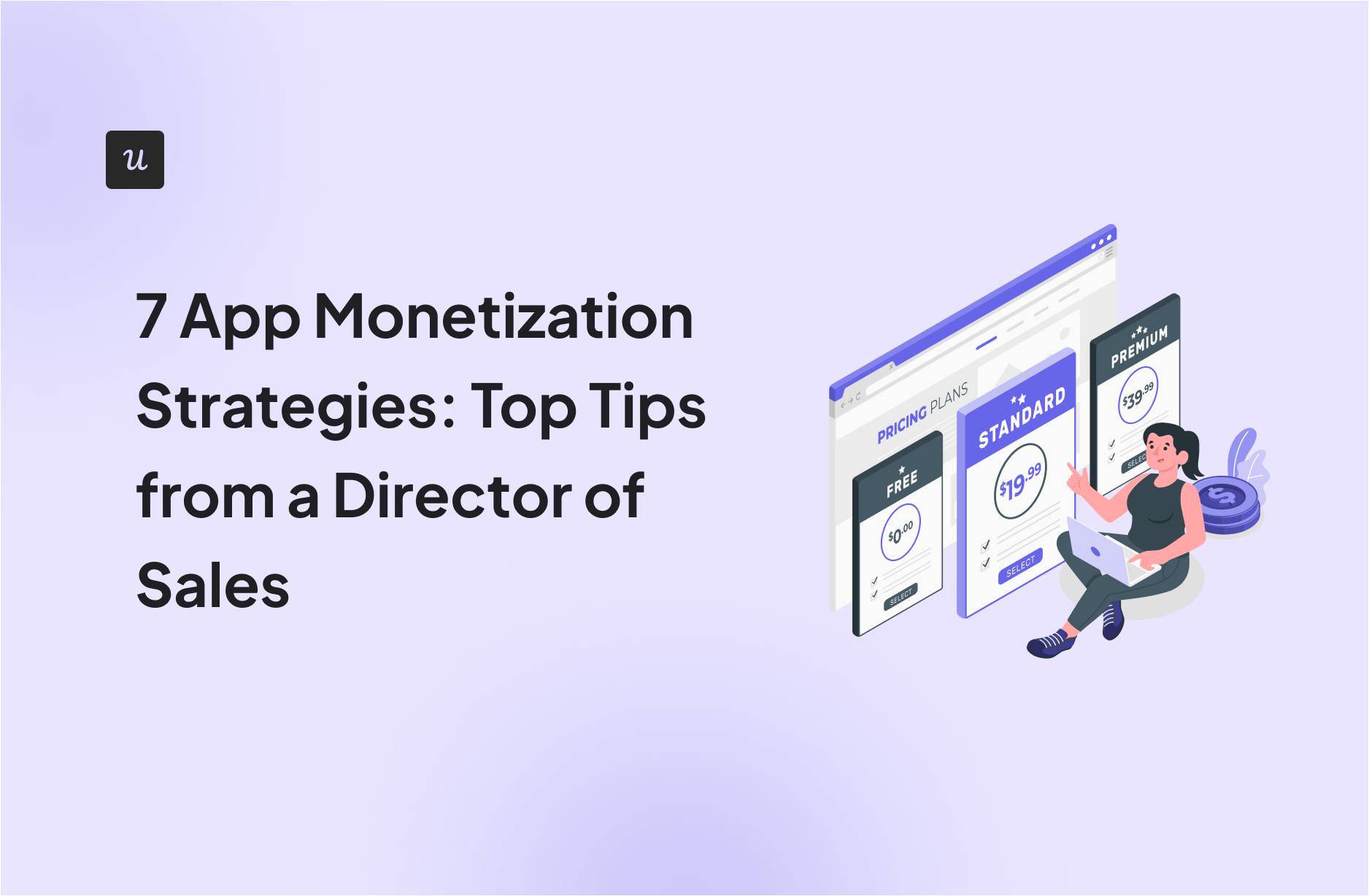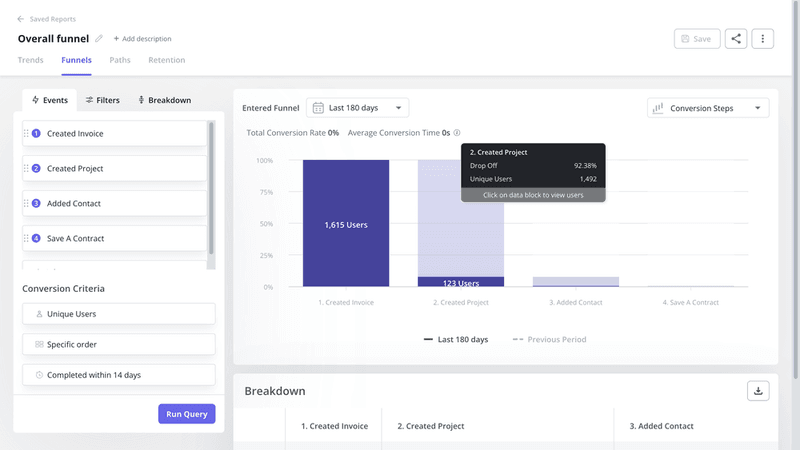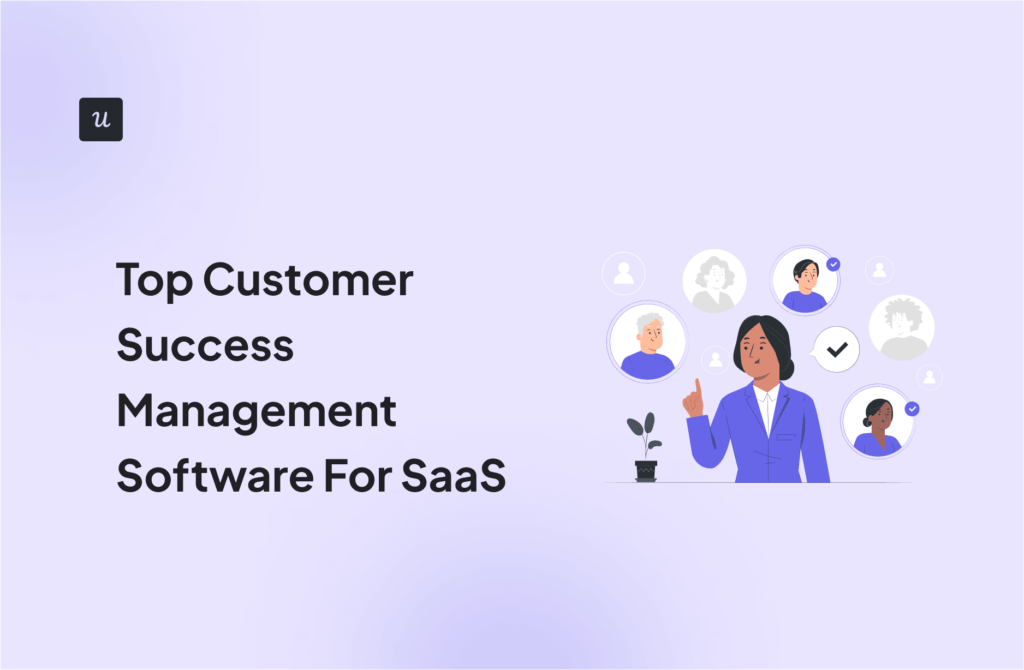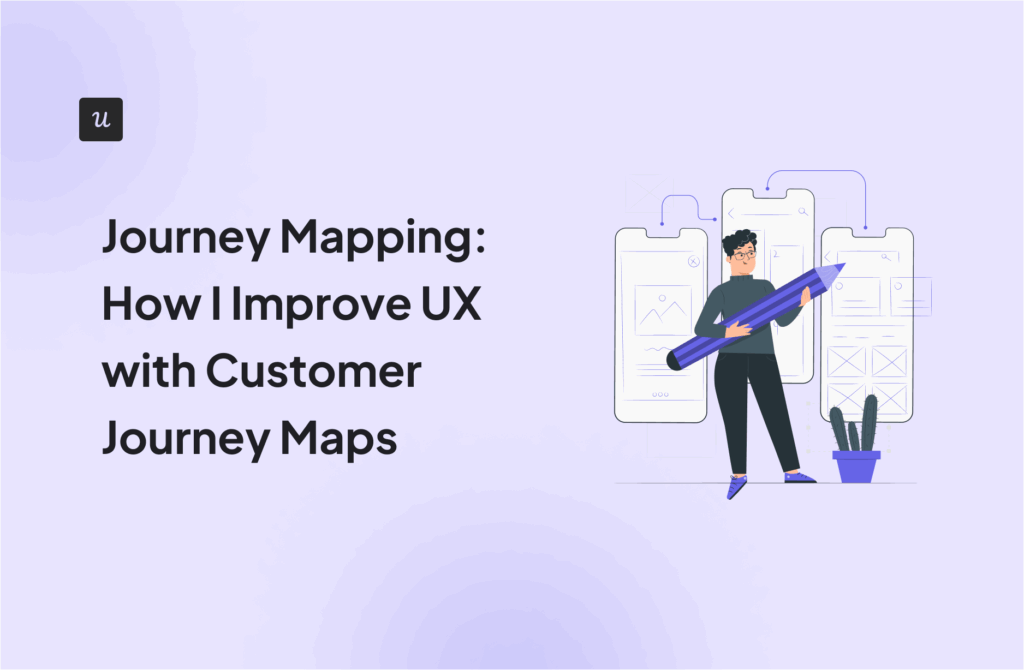
Let’s be honest: most app monetization strategies are outdated and even downright annoying to users. Between intrusive pop-up ads, strictly gated features, and endless upsells, users are over it, and churn rates reflect that.
As the director of sales, I’ve helped teams move past outdated tactics to create monetization models that foster win-win situations, maximizing revenue for the business while ensuring a seamless user experience. In this article, I’ll share my seven proven strategies designed to drive sustainable app growth over the long term.
Try Userpilot Now
See Why 1,000+ Teams Choose Userpilot

How to choose the right mobile app monetization model?
Let me be clear: there is no one-size approach to monetizing your app, and the one you choose will depend on your audience, niche, and market.
Before explaining to you how to do it, let’s get a grip on the main models dominating the market:
| Monetization Model | Best For |
|---|---|
| Freemium | Productivity, wellness, educational apps |
| In-App Ads | Games, news apps, high-traffic platforms |
| Subscription | SaaS products, fitness apps, media streaming |
| Paid App | SaaS products, fitness apps, media streaming |
| In-App Purchases | Games, creativity tools, note-taking apps |
| Sponsorships | Health, lifestyle, community or event-based apps |
| Affiliate Marketing | Shopping, travel, review, or content-rich apps |
| Pay-Per-Use | AI tools, APIs, marketplaces, utilities |
However, don’t limit yourself; if you conduct research, you’ll see that most successful apps use a combination of these methods. Take Canva, for instance. They hook users with powerful core features for free, then entice the most engaged to upgrade by offering premium templates and advanced tools through in-app purchases.
Now that we’ve got the basics, let’s go over the process of choosing your monetization strategy.
1. Understand your app and users
My first piece of advice is to clarify your app’s value and target audience.
Know who your app’s users are, how often they engage with your platform, and their spending habits.
As we can imagine, a meditation app used for 10-minute daily sessions has different monetization potential than a travel mobile app opened twice yearly.
The same monetization model cannot work for both.
Plus, iPhone users accounted for 68.13% of all consumer spending on App Store apps. Android maintained a 31.87% share of global app spending in 2024.
And regional differences create significant opportunities. Iceland shows a $62 average LTV compared to China and India at $29 and $28.1, respectively.
You need to put all these variables together before finalizing your monetization strategy. And if you’re unsure, I always recommend studying competitors’ monetization models to find what works and figure out what you can do differently.
2. Match monetization to the app’s growth stage
App users need to experience value before they’ll pay for it.
So early on, I suggest focusing on expanding your user base with low-friction models like freemium apps or in-app advertising to monetize your apps effectively.
Once usage stabilizes, you can introduce premium tiers or subscriptions that add value without alienating users.
Netflix demonstrates this progression with tiered pricing, from $6.99 ad-supported to $22.99 premium.
As your app matures, you should prioritize maximizing lifetime value through loyalty programs or exclusive content.
Clash of Clans generated $355 million in 2024 through in-app purchases and social pressure mechanics. That’s an outlier but offers a model you can emulate as your app grows.
3. Constantly monitor and adjust
“You can’t grow what you don’t measure.”
That’s why we need to set up systems to continually track how app users behave, user retention, lifetime value, acquisition cost, and churn to measure success.
Healthy LTV/CAC ratios are around 3:1. If your mobile app has a lower ratio, that’s an opportunity to optimize.
My 7 tried-and-true app monetization strategies for different models
Whether you’re navigating freemium, subscriptions, or hybrid models, I’ve got a tip for you! If you want to build a revenue engine that scales without sacrificing user loyalty, these are the tactics I believe you need to know.
1. Freemium model
How it works: Offer core functionality for free while charging for premium features, advanced capabilities, or enhanced user experiences.
Pros: Low barrier to entry, large user base potential, clear upgrade path for engaged users.
Cons: Low conversion rates, high user acquisition costs, and requires a large scale to generate revenue consistently.
Here’s how you can make the most of your freemium plan:
Find the right balance between free and paid features
The success of your freemium model depends less on the number of features you offer and more on which ones you choose. In my opinion, the art is in knowing what to give away to drive adoption, and what to reserve to drive revenue.
Start by identifying your product’s core value path: What’s the minimum functionality users need to get it? Your free tier should include just enough to help users quickly reach their first meaningful outcome. This builds trust, shows value, and keeps them engaged.
Next, map your premium features to advanced use cases or power users. These are things that save time, scale impact, or provide deeper insight; the kind of value that’s obvious to someone who’s already invested.
A good rule of thumb:
- Free = value discovery
- Paid = value expansion
Use product analytics to identify which features correlate most strongly with long-term retention and revenue. If a feature is only used by highly engaged users or team leads, that’s a good candidate for your paid tier.
Userpilot’s trend reports help you see the features that are popular among different user segments, helping you decide what to gate and what to keep free for maximum conversion impact.
Use time-limited premium trials to encourage upgrades
Offering new users a time-limited trial of premium features creates a risk-free opportunity for them to experience the full value of the app.
During that period, users get accustomed to certain features in the premium that get locked after the trial is over. At that point, the limited version becomes nearly unusable for power users, compelling them to upgrade.
How long you keep the trial depends on how long it takes for your typical users to experience value from your app. If your app can create an “Aha!” moment within 3 days, set up the trial to be 7 days (adding buffer time to help users get accustomed).
Our very own tool, Userpilot mobile, allows you to compare conversion rates across different trial lengths and find the duration that results in the most conversions. You can use Userpilot’s funnel analysis and create a chart for your activation events, then view on which days free trial users convert the most.

When your trial period is about to end, send reminders nudging users toward the upgrade and reminding them that they’ll lose access to the pro features if they don’t.
2. In-app ads
How it works: Display text ads, banner ads, and video ads within your app and earn revenue based on impressions (CPM) or clicks (CPC).
Pros: No user payment required, works well with large user bases, multiple ad formats available.
Cons: Can hurt user experience, revenue depends on traffic volume, and privacy changes affect targeting.
Implement contextual and targeted ads to improve relevance
Many free apps spam the user with irrelevant ads. But I’m here to tell you that we can earn from ads without spamming.
Start using demographic data and user behavior patterns to deliver tailored in-app advertisements (like interstitial ads and native ads) that match user interests and app context. Contextual placement performs better than random interruptions.
For instance, a meditation app could tailor ads to be around meditation books or courses.
But be careful not to show your competitor’s ads inside your app. You can block specific companies on the ad network that you use.
Incorporate rewarded ads to increase engagement
You may see some free apps show you ads for rewards that you can use in the app.
For instance, Macrodroid (an Android automation app) lets you view ads to continue using the app for free. Games like Vampire Survivors give you free “revives” or “extra lives” in the game for watching ads.
This style of ads lets the user control their experience and choose to view the ads instead of being forced to view them.
This control also ensures that users view the complete ad, so you can generate revenue from the full ad view.
On top of the ad revenue, users who view rewarded videos/surveys/ads are 4.5x more likely to make in-app purchases, indicating advertising can also drive direct revenue.
The psychological principle: Users who invest time watching ads can be seen as more committed to the app. Just make sure that you limit the number of ads that are shown on your app to 3-4 ads daily to prevent user fatigue.

3. Subscription
How it works: The subscription model charges users recurring fees (monthly/annual) for ongoing access to premium features or content.
Pros: Predictable recurring revenue, higher lifetime value, and strong user engagement signals.
Cons: Subscription fatigue, high churn potential, requires ongoing value delivery.
Design tiered subscription plans for different user segments
We see this all the time: almost all apps offering tiered subscription plans.
For instance, the basic plan of a meditation app could include features such as meditation timers, music, and courses that are sufficient to meet the needs of individual users. An upgraded team plan could add collaboration and organization-level tracking for employee well-being implementations.
Multiple subscription tiers with increasing benefits allow apps to cater to diverse user needs and budgets. And for that, you need to ensure that each tier has clearly defined value propositions that justify price differences.
Also, this is common practice now, but it makes sense to offer both monthly and annual billing options with discounts for longer commitments. Industry data shows annual plans with 49% average discounts compared to monthly pricing achieve better retention through reduced payment friction.

4. Paid app
How it works: Charge users an upfront, one-time fee for app downloads and to use your premium app.
Pros: Immediate revenue, no ongoing monetization pressure, clear value proposition.
Cons: High barrier to entry, limited revenue expansion, fierce competition with free alternatives.
Deliver continuous value with free updates and paid expansions
When it comes to paid apps, even though users need to pay one time to download your app, they still expect ongoing value.
Providing free minor updates over time helps you deliver that value while showing continued commitment towards your app.
For example, you could give one year’s worth of updates for free. After that, users can pay for new feature updates, or they can continue to use the app while only receiving security updates.
Professional apps like Procreate succeed with this model by regularly adding new brushes, tools, and capabilities through free updates while charging for major feature packs.

Bundle the app with related products or services
Offering your paid apps as part of a bundle with complementary apps can increase their perceived value.
Adobe does this well. You can subscribe to single apps for $9.99/month each, get the photography suite for $19.99/month, or go for all the apps at just $59.99/month.

Apart from upfront bundling, you can cross-promote between your app ecosystem. If you have multiple productivity apps, offer bundle pricing to encourage users to adopt your entire suite.
But if you don’t have an app ecosystem, that’s alright too. You can always bundle additional services.
For example, if you have a gallery app, bundle a storage service that allows users to upload and view photos seamlessly across devices.
The idea is to get creative and increase the perceived value of your products.
5. In-app purchases
How it works: The in-app purchases model allows you to sell digital goods and premium features, particularly effective for gaming apps that offer in-app purchases.
Pros: Revenue from engaged users through in-app purchases, flexible pricing options, and works well with freemium models.
Cons: Requires careful balance, potential user backlash, and platform commission fees.
Use limited-time offers and discounts to create urgency
You see e-commerce sites using limited-time offers regularly.
Amazon’s lightning deals. Target’s weekend sales. Black Friday madness. This isn’t just for e-commerce.
Mobile apps can use the same psychological principle that these online retailers have perfected over decades: loss aversion. Users fear missing out more than they desire gaining something.
This fear kicks in when users hit natural friction points.
Someone reaching their storage limit feels the potential loss of photos they can’t save. A language learner hitting their daily lesson limit fears losing their learning streak. A gamer running out of lives fears losing progress in their current level.
These are the exact points where you can offer in-app purchases, showing limited-time storage upgrade offers, discounted higher tiers to unlock more lessons, or more “lives” for the game.
Timing your offers at these exact friction points can result in a much higher conversion rate.
Implement personalized purchase recommendations
As much as we’d like to, we can’t just push sales to everybody and call it a day (unfortunately).
To make these in-app purchases impactful, you need to create personalized recommendations based on their in-app actions.
For instance, if a segment of users regularly taps a premium calendar feature on your productivity tool, you can offer an upgrade at a discount and give them the final push they need to make their upgrade decision.
Once you have identified a segment of users, you send them personalized push notifications. These messages should provide genuine value to avoid alienating users or coming across as spam.

6. Affiliate marketing
How it works: Earn commissions by promoting third-party products or services within your app.
Pros: No inventory management, passive income potential, uses existing user base.
Cons: Requires user trust, potential revenue volatility depending on the affiliate network.
Integrate affiliate links contextually within the app
Affiliate marketing works best for content- or information-heavy apps.
It’s a low-maintenance monetization method (similar to ads, but with more control).
You place affiliate links to partner landing pages from your content, and if users make a purchase through the link, you get a commission.
For example, if you’re promoting “Deep Work” by Cal Newport, place an affiliate link where you’re talking about productivity. Simple!
The overarching idea is that affiliate links should feel like a natural part of your app’s content and design language.
If affiliate links need to feel like helpful recommendations, you’ve integrated them successfully.
7. Pay-per-use
How it works: Charge users based on actual usage, consumption, or specific actions within the app.
Pros: Fair pricing model, scales with value delivery, popular among AI-based apps.
Cons: Unpredictable revenue, requires usage tracking, and potential user anxiety about costs.
Implement transparent usage tracking and billing
If you have an app that costs you a lot to run, this monetization model may work better for you.
For example, AI-based image generator apps have a fixed number of credits per month, and users can buy more credits if they run out. The pay-per-use monetization model makes sense for such businesses where there’s a recurring cost.

To execute this, give users clear, real-time information about usage and costs throughout the app. You can show the credits available in a fixed menu bar or a sidebar where they are always visible.
The more transparent you are with all usage or overage charges, the more users will trust you.
You can go a step further and integrate alerts to let users know when they approach limits, preventing surprises and improving satisfaction.
Nobody likes unexpected bills, especially for digital services they thought were predictable.
Offer microtransactions for specific features or actions
You’ll see online PDF editors, image background removers, and other similar tools have these microtransactions for specific actions. If you want to download your image after removing the background, the tool may ask you for a one-time payment for the full resolution.

Charging small amounts like these for discrete features allows users to pay only for what they need. This flexibility is perfect for apps that attract occasional users.
Getting this right can be a bit tricky, though. Your users are using your app for a specific task and want to complete it fast. If you try to hold them back on the website for too long, you’d end up losing the user forever.
So, keep purchase flows simple and fast to minimize friction.
Walk your path to successful app monetization
The best apps make monetization frictionless for users. Users pay because they want to, and when they do, the app makes it easy for them.
The process for integrating a monetization model successfully is simple: understand users deeply, provide clear value, and optimize based on real behavior data. You start with one model, master it, then add more strategically. A mobile adoption tool like Userpilot makes it easy to track which features drive engagement, where users get stuck, and how they respond to different experiences. With that data in hand, you can launch timely in-app messages and push notifications that move users toward the outcomes.
Book a free demo with Userpilot and see how you can use real-time behavior data from your app to maximize your revenue.









